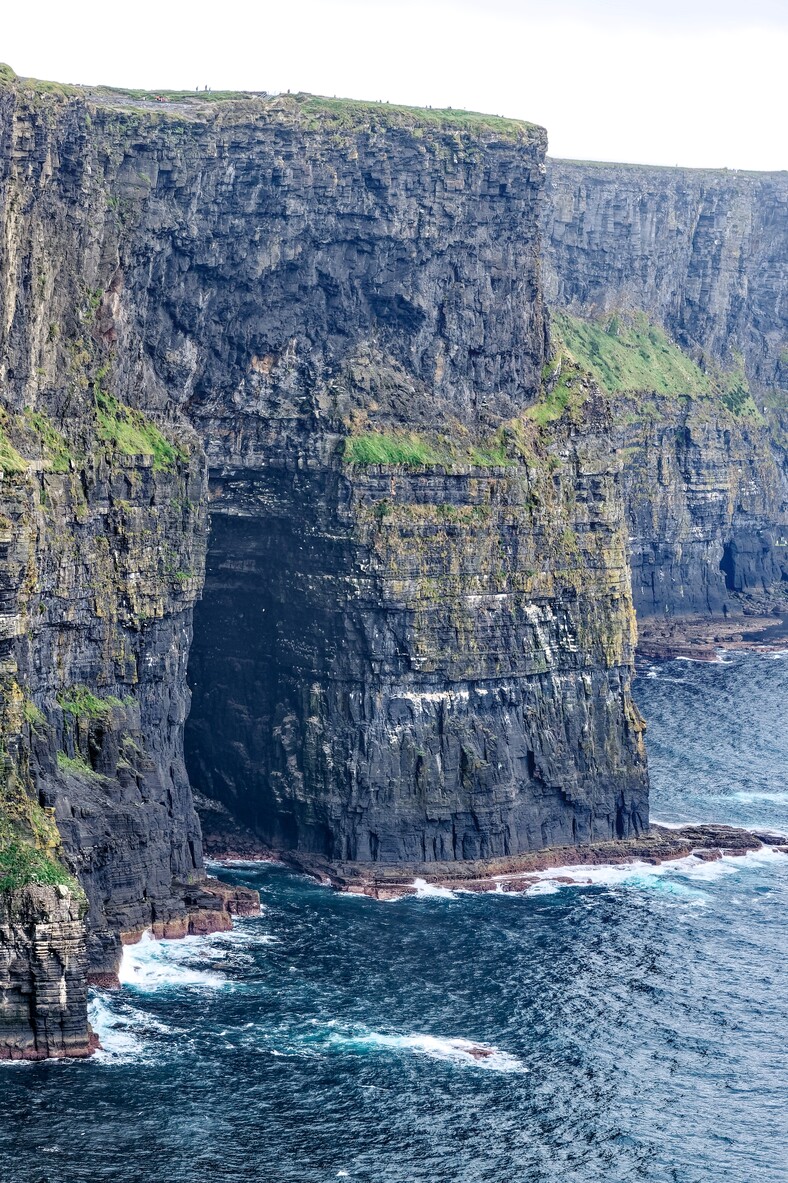The Cliffs of Moher, Ireland’s iconic natural landmark, derived its name from an ancient promontory fort called “Mothar” or “Moher.” This fort, believed to be built in the 1st century BC, stood at Hag’s Head, the southernmost point of the cliffs. The Irish word “Mothar” is often interpreted as “ruined fort” or “broken fort,” reflecting the state of the ancient structure that once guarded this dramatic coastline.
What Is the Origin of the Name “Moher”?

The name “Moher” has its roots in Irish history and language:
- Irish Etymology: “Moher” comes from the Irish word “Mothar.”
- Ancient Fort: It refers to a fort that once stood at the southern end of the cliffs.
- Time Period: The fort is believed to date back to the 1st century BC.
- Location: Situated at Hag’s Head, the southernmost point of the cliffs.
What Does “Mothar” Mean?
The term “Mothar” has several interpretations:
- Primary Meaning: “Ruined fort” or “broken fort”
- Linguistic Debate: Some scholars argue the exact etymology is unclear
- Historical Context: Likely refers to the state of the ancient fort over time
How Has the Name Evolved Through History?

The name “Cliffs of Moher” has a rich historical context:
- Ancient Times: Known locally as “Mothar” or “Moher”
- Medieval Period: Mentioned in various Irish texts and maps
- 19th Century: Gained popularity as a tourist destination
- Modern Era: Officially recognized as “Cliffs of Moher”
What Historical Events Shaped the Cliffs’ Name?
Several key events influenced the cliffs’ naming and recognition:
| Time Period | Event | Impact on Name |
|---|---|---|
| 1st Century BC | Construction of Mothar Fort | Origin of the name |
| Viking Era | Norse invasions | Possible influence on local toponymy |
| 1808 | Demolition of old fort | Reinforced “ruined” aspect of name |
| 1835 | Construction of O’Brien’s Tower | Increased prominence of the site |
What Legends Are Associated with the Cliffs’ Name?
The Cliffs of Moher are steeped in local folklore:
- Hag’s Head Legend:
- Story of a witch named Mal pursuing Cú Chulainn
- Mal’s failed attempt to jump back to the cliffs
-
Her head washing up at what is now Hag’s Head
-
Leap of the Foals:
- Tale of seven foals representing Tuatha Dé Danann gods
- Foals emerging from caverns near the cliffs
- Their plunge into the sea, linking to mythology transition
These legends add depth to the cultural significance of the cliffs’ name.
How Does the Name Reflect the Cliffs’ Geological Features?
While the name “Moher” doesn’t directly describe the cliffs’ geology, it indirectly reflects their imposing nature:
- Defensive Position: The ancient fort’s location highlights the cliffs’ strategic importance
- Natural Barrier: “Mothar” implies a fortification, mirroring the cliffs’ role as a natural fortress
- Endurance: The name’s persistence echoes the cliffs’ resilience against time and elements
What Role Did Sir Cornelius O’Brien Play in Popularizing the Name?
Sir Cornelius O’Brien, a local landlord, significantly contributed to the cliffs’ fame:
- Tourism Development: Built amenities to attract visitors in the 19th century
- O’Brien’s Tower: Constructed in 1835, enhancing the cliffs’ profile
- Name Promotion: His efforts helped solidify “Cliffs of Moher” in popular consciousness
How Has the Name “Cliffs of Moher” Impacted Modern Tourism?
The name “Cliffs of Moher” has become a powerful brand in Irish tourism:
- Global Recognition: One of Ireland’s most visited natural attractions
- Cultural Icon: Featured in films, literature, and music
- Conservation Efforts: The name’s fame has aided in preservation initiatives
- Economic Impact: Drives local and national tourism revenue
What Challenges Does the Name’s Popularity Present?
The fame of the “Cliffs of Moher” name brings certain challenges:
- Overcrowding: Managing high visitor numbers
- Environmental Concerns: Balancing tourism with conservation
- Cultural Preservation: Maintaining local traditions amidst commercialization
- Linguistic Evolution: Ensuring the Irish origin of “Moher” isn’t lost
In conclusion, the name “Cliffs of Moher” encapsulates a rich tapestry of Irish history, mythology, and natural wonder. From its origins as an ancient fort to its status as a global tourist attraction, the name continues to evoke the majesty and mystery of Ireland’s western coast.
References:
– https://www.cliffsofmoher.ie/unesco-global-geopark/conservation/history/
– https://myirishcousin.com/fascinating-facts-about-the-cliffs-of-moher/
– https://en.wikipedia.org/wiki/Cliffs_of_Moher
